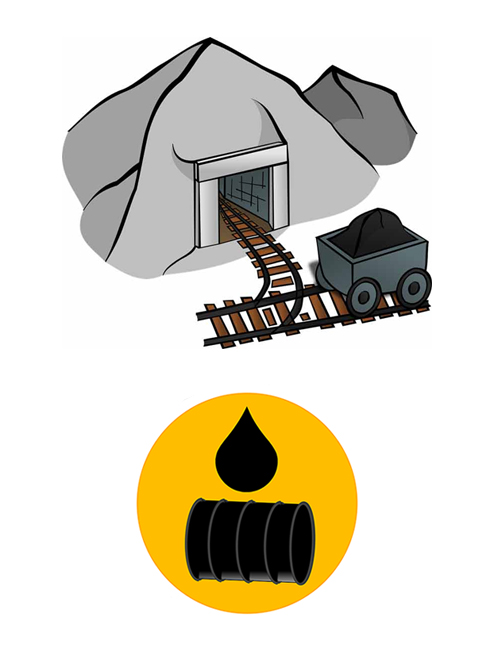
- Minerals are valuable natural resources and they are crucial for our industrial, technological and cultural growth.
- Mineral deposits are formed slowly over the millions of years and once used cannot be regenerated.
- Minerals are classified into fuel, metallic and non-metallic.
- Fuel minerals like coal, oil and natural gas account for nearly 87% of the value of mineral production whereas metallic and non-metallic constitutes 6 to 7%.
- Metallic minerals include iron, aluminium, copper, tin, nickel, silver, gold and platinum etc.
- Non-metallic minerals include sand, gravel, cement, salt, sulphur, phosphorous, diamonds and gems.
- Minerals are closely related to development and play a significant role in the economy of a nation, as they provide important materials for many basic industries such as sand, gravel, cement, salt, sulphur, phosphorous, diamonds, gems, coal and the by products of petroleum refining such as petrol, kerosene and lubricants.
- Minerals such as coal and petroleum are important sources of energy. They are widely used in different sectors such as transport, agriculture and industry. In nuclear reactors, the atomic energy is produced by the nuclear reaction between uranium and thorium.
- Minerals also used in the field of medicine and surgery, space technology, electrical equipment and construction.
- Minerals are also crucial for economic development of a country as they contribute to urbanisation, industrialisation, transportation and communication systems, and it becomes important that minerals are sustainably used.
- Mining of fossil fuels has led to increased deforestation which further leads to air, water and soil pollution. It leads to release of toxic pollutants in the air, decreased soil fertility, soil erosion and contamination of water bodies.


 Biodiversity
Biodiversity